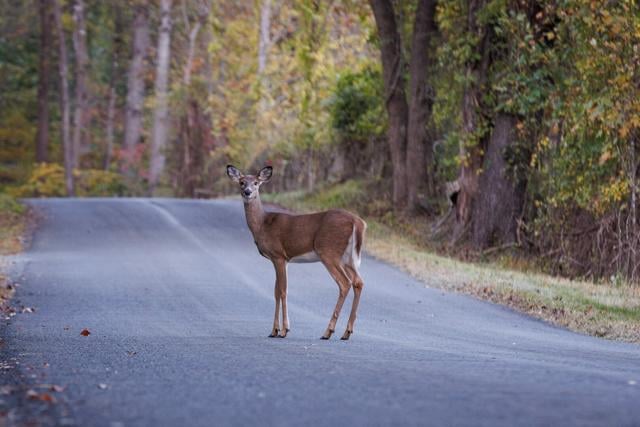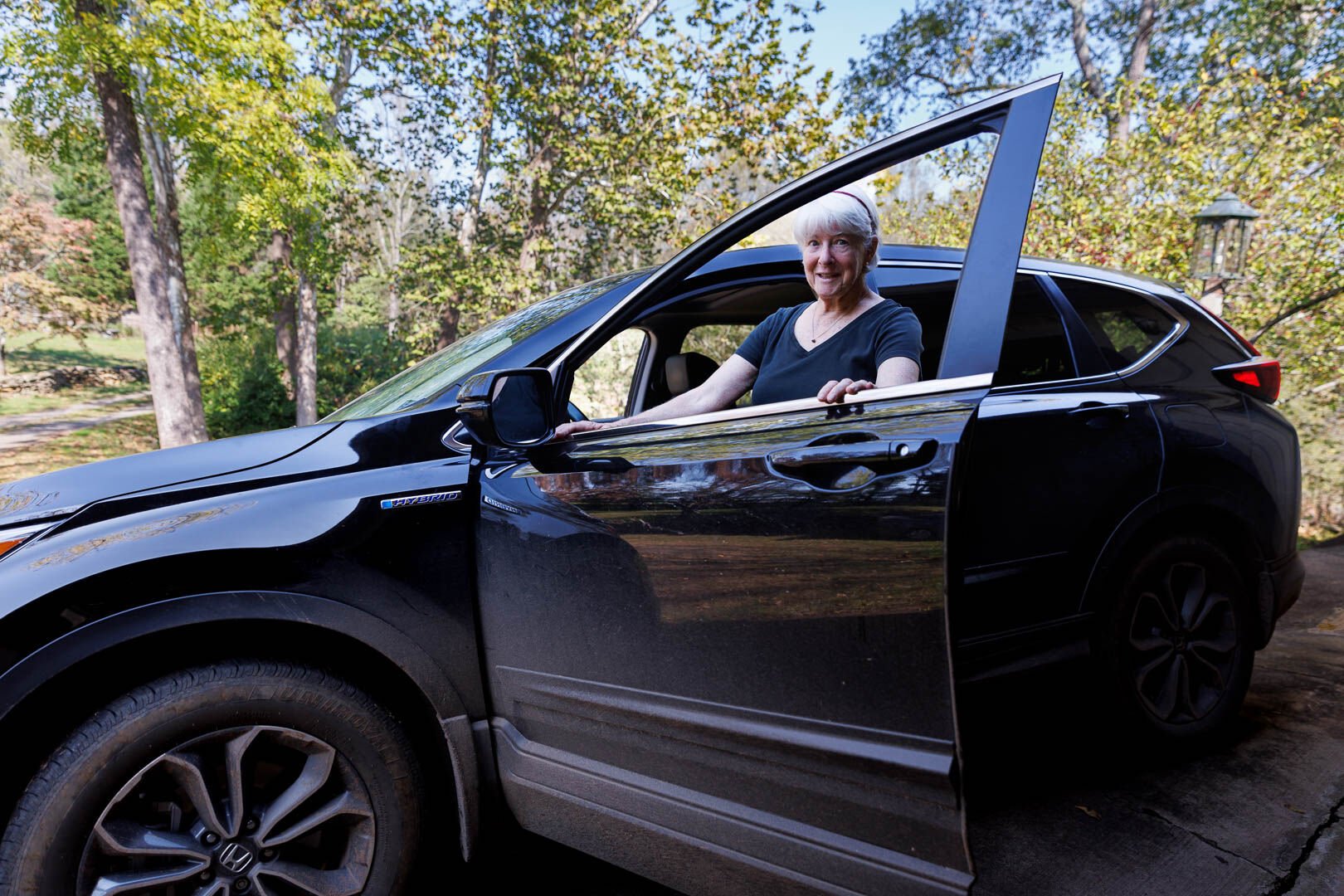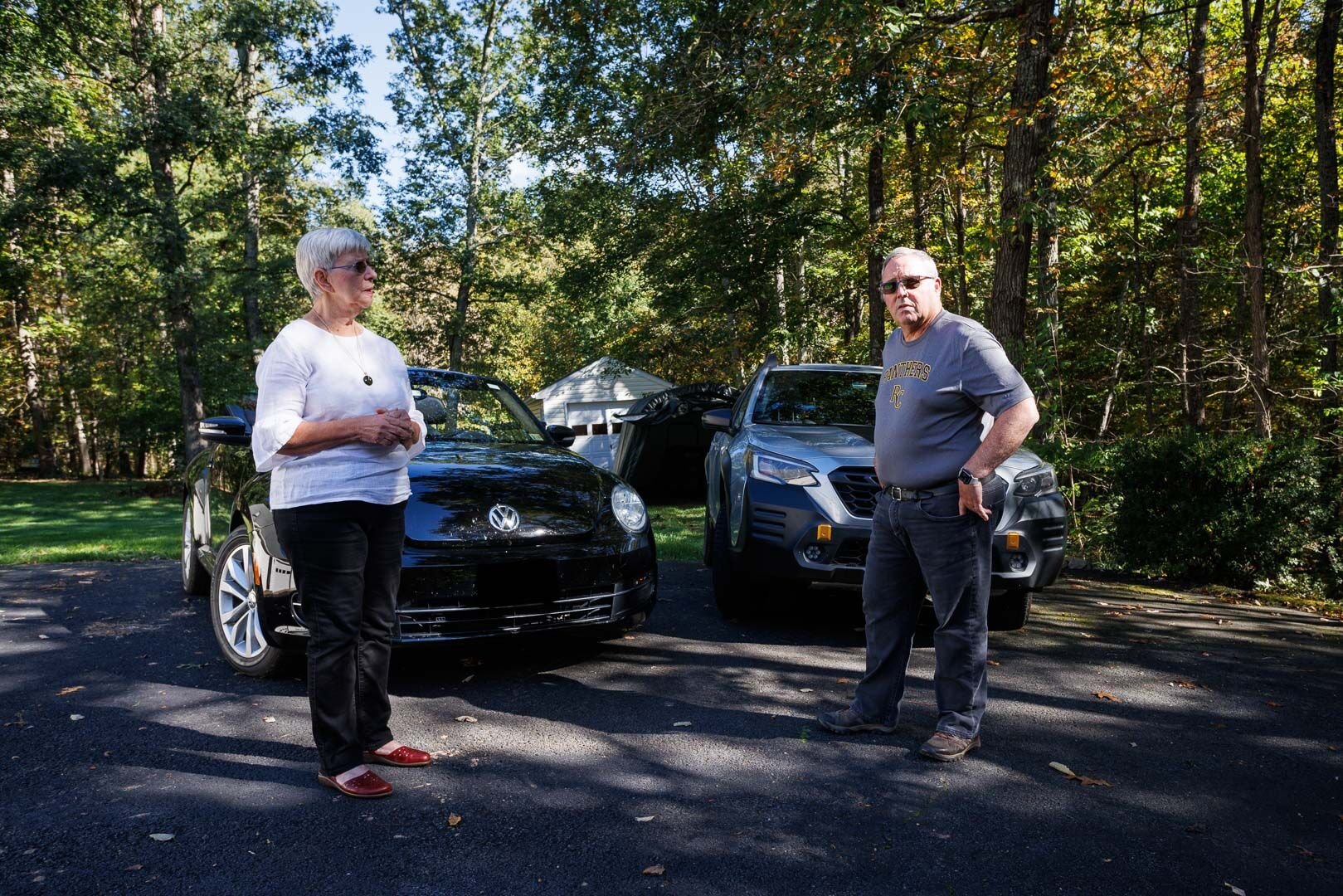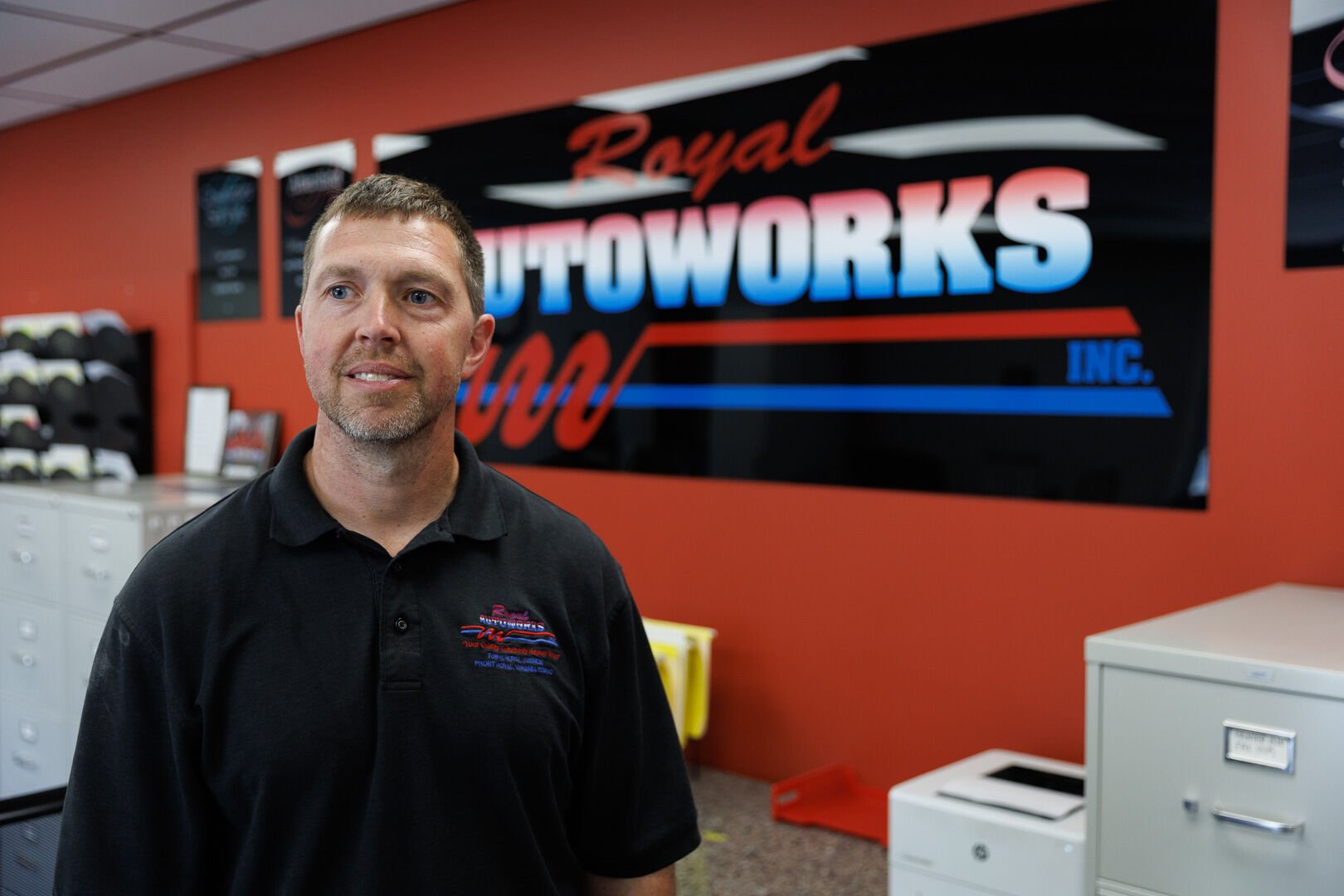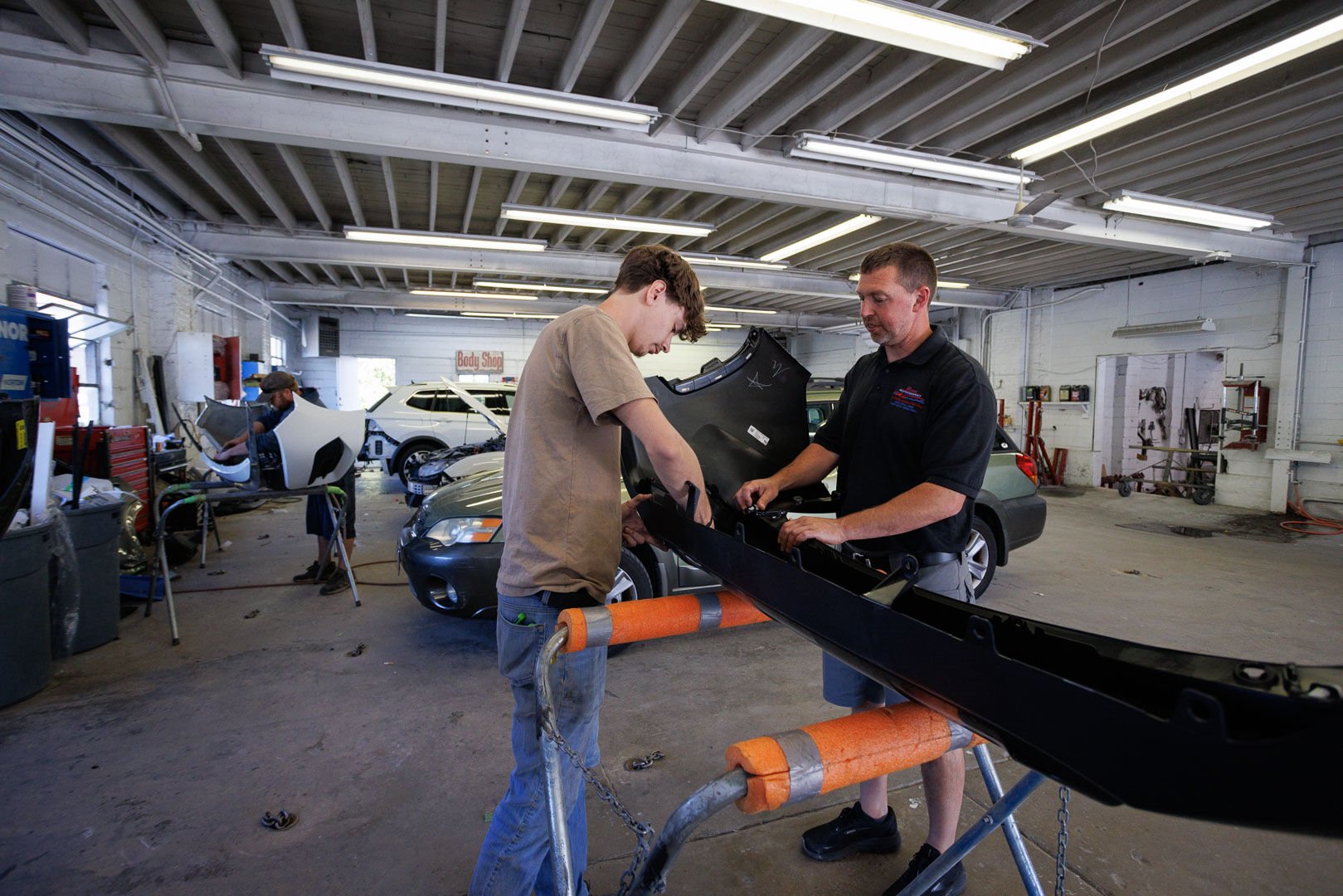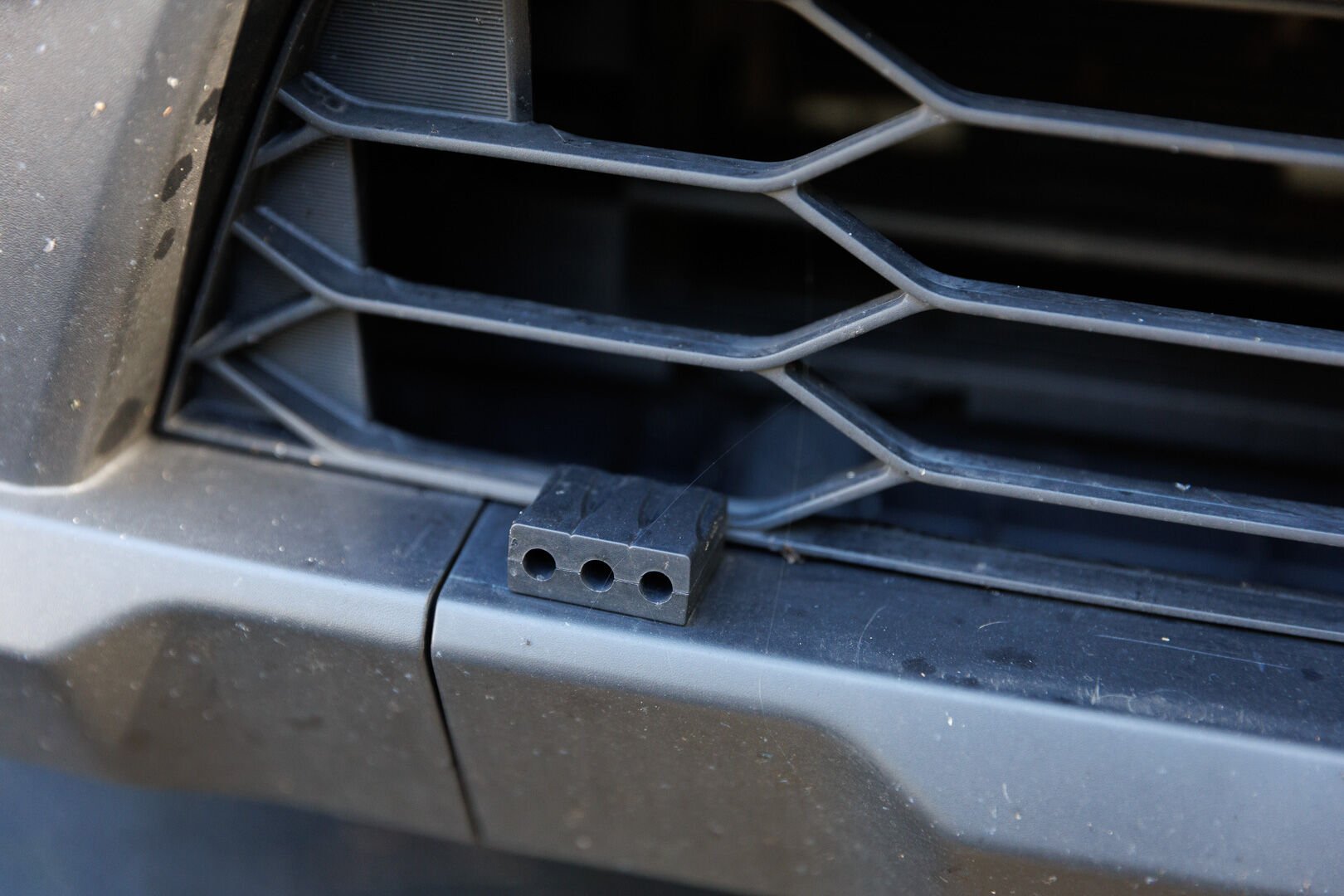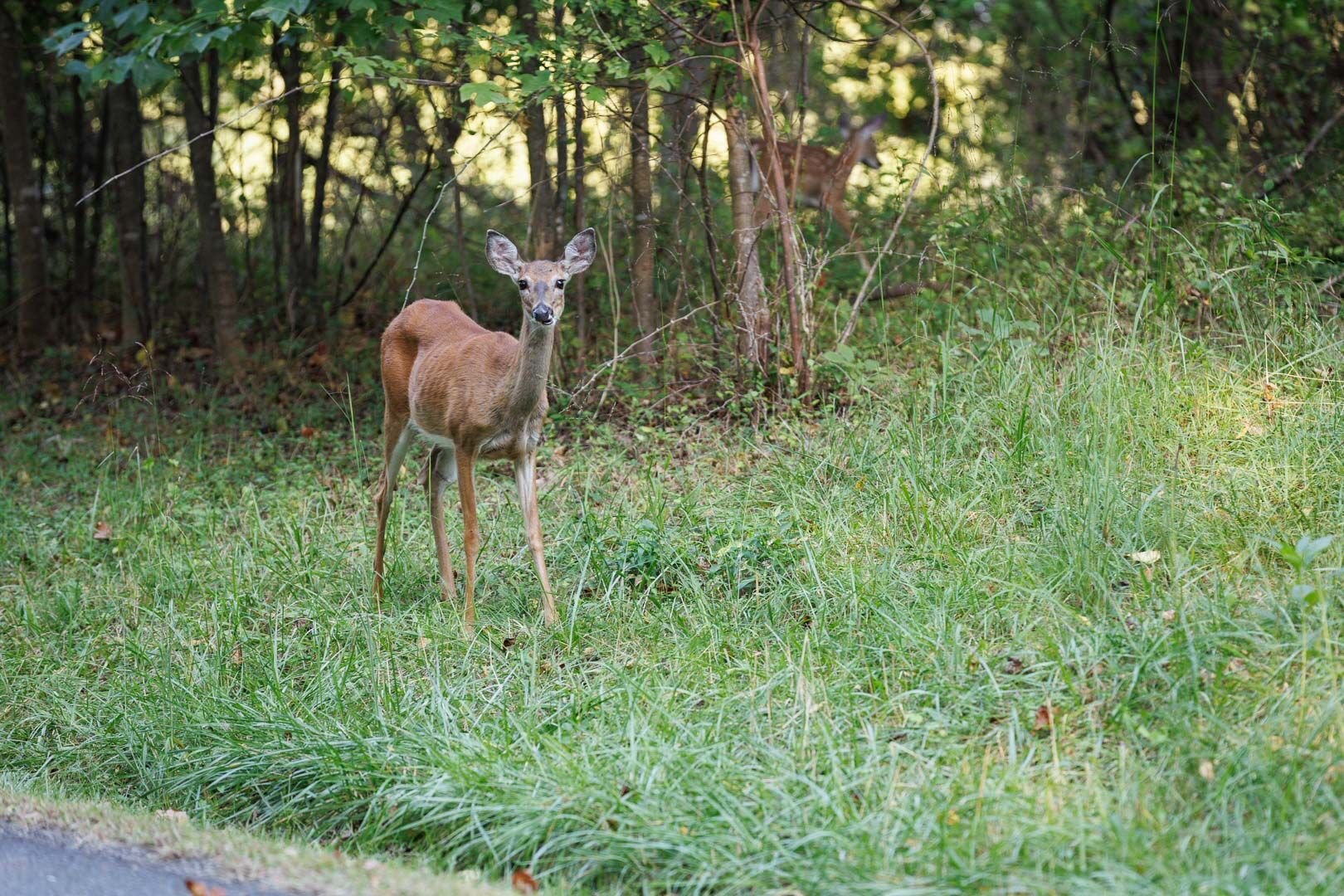
Deer Road.jpg
Deer on the road in Tiger Valley.
On a clear November night around 11 p.m., Edie and David Tatel of Castelton were traveling on a twisty, narrow section of Rock Mills Road toward the bridge that crosses the Thornton River. Out of nowhere a deer jumped in front of their 2022 Honda CRV, damaging the vehicle’s front bumper and panels.

2024-10-12-FF-Deer-Tatel-1-web.jpg
Edie Tatel in Castleton with her Honda CRV that had been in a deer collision.
Tim and Emily Grimes of Amissville had two deer collisions within four months of each other last year, one with a brand new car.
Tim was driving on Route 211 to Warrenton when a deer jumped from the median and hit their new Subaru Outback on the front driver’s side. “I wasn’t expecting a deer to roam so early on an August morning,” he said. “The collision crushed the deer’s rib cage and my windshield was covered with saliva.”
On an early December evening a deer jumped from the median on Route 211 not far from the Amissville dump, clipping the back end of a pickup truck in front of Emily’s VW Beetle. “It broke its legs and slid into my front end,” she said.

2024-10-08-FF-Deer-Grimes-2-web.jpg
Emily and Tim Grimes of Amissville with their VW Beetle and new Subaru. Both cars were in deer collisions within four months of each other last year.
Accidents like the Tatels and Grimes are all too familiar to many Rappahannock drivers.
Recent data show these incidents are increasing at an alarming rate.
In the first nine months of this year, 35 crashes have been reported in the county, a 34% increase over the same period in 2023. One injury was reported in 2023 and four injuries thus far in 2024.
“The busy season for deer collisions used to start in September and run through December, but now we are getting cars with deer damage throughout the year,” said Nathan Patterson, owner of Royal Auto Works in Front Royal.
“I can’t put my finger on it exactly, but I think the population increase in the area has a lot to do with it. More people, more cars, more collisions,” he said.

2024-10-10-FF-Deer-Bodyshop-3-web.jpg
“The busy season for deer collisions used to start in September and run through December, but now we are getting cars with deer damage throughout the year,” said Nathan Patterson, owner of Royal Auto Works in Front Royal.
According to the Virginia Department of Motor Vehicles (DMV), Rappahannock County saw 53 deer-related collisions last year, with 43% of them occurring during the peak breeding season in late October and early November.
Statewide, DMV reports there were 7,335 deer related crashes in 2023, up 18% from 2022, with about 54% of the collisions happening in the last three months of the year – the “rut” period when bucks are on the move seeking out mates. Experts urge motorists to be extra vigilant to avoid deer collisions on roadways, especially at dawn and dusk.
“We knew it was the time of year when deer are most active, so we took precautions,” Edie Tatel said. “I was driving well below the speed limit, had my high beams illuminated and was constantly scanning the road. There was nothing I could do about it,” she said.
Virginia in top 10 states
According to the State Farm insurance company, which has tracked animal collision incidents for almost 25 years, Virginia ranks ninth nationwide, with the odds of a crash being one out of 73. West Virginia is the riskiest state, with a one in 40 chance of a collision.
From July 1, 2023 through June 30, 2024, Virginia drivers filed more than 80,000 claims for animal collisions, according to Dave Phillips, a State Farm spokesman. “Often those filing claims do not report them to police or state agencies, which is why you see the gap between reported crashes and filed claims,” he said.“Deer, by far, are the number one animal involved in collisions. Out of an estimated 1.8 million animal collisions nationwide, 1.3 million are deer.”
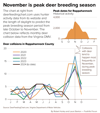
deer-2-web.jpg
Other top animals involved in collisions, according to State Farm, are rodents like squirrels, as well as dogs, bears and raccoons.
Although the statewide deer population estimate has been stable at around 1.1 million for the past 10 years, Rappahannock County is considered by the Virginia Department of Wildlife Resources (DWR) to have a high to moderate concentration.
The DWR is looking to reduce the deer population in Rappahannock to a moderate level according to Justin Folks, the agency’s deer project leader. “That decision was based on what we call ‘cultural carrying capacity’ which includes factors such as vehicle collisions, agricultural damage and residential plant damage. To lower the deer population, we focus on reducing the number of female deer by providing hunters opportunities to harvest more does than bucks,” he said.
Repair costs going up
According to AAA Mid-Atlantic, the average claim in 2023 for Virginia policyholders for an animal strike was $5,816 – up 5% from the year before. The organization reports the increase in cost is due, in large part, to new vehicle technology including cameras and sensors that may be in the windshield, bumper or rearview mirrors.
Repairs for the Grimes’ two vehicles were above the average, costing over $6,000 each, as were the Tatels’ at more than $9,000.

2024-10-10-FF-Deer-Bodyshop-1-web.jpg
Nathan Patterson, right, owner of Royal Auto Works in Front Royal.
Filing a claim for an animal collision may not always result in an increase in a driver’s insurance premium.
“If you have to file a claim for a deer collision, it is not considered a chargeable accident, so you may not see any impact to your policy,” said Phillips of State Farm.
The Grimes and Tatels reported their insurance rates did not go up because their insurer classified the accidents as no fault.
Repairs can sometimes take up to three weeks depending on the damage and availability of parts, Patterson said. “Getting parts has been a problem since COVID. Some are readily available, others you have to wait for. It all depends on the part and the manufacturer.”
The Tatels waited about three weeks for repairs to be completed, while the Grimes had a three-month wait.
General manager Danielle Criste of Caliber Collision in Culpeper estimates deer collisions are about 50% of the repair inventory during the fall months. “It usually begins just before the rut season and goes through November and December,” she said. “There are times when there is zero parking in our large lot because we are full up with vehicles damaged by deer.”
Roadkill clean up
The Virginia Department of Transportation (VDOT) is the state agency principally responsible for removing animal carcasses from state-maintained roadways. That includes the public roads in Rappahannock County. Last year, VDOT disposed of more than 17,000 deer carcasses statewide at a cost of $1.3 million.
Carcasses are disposed of in designated landfills around the state and at special composting facilities. Both Rappahannock refuse facilities at Amissville and Flatwood are allowed to accept deer carcasses. Body parts, they recommend, should be double-bagged.
Sign up for Rapp News Daily, a free newsletter delivered to your email inbox every morning.
A new state law that took effect last July permits anyone to harvest a deer, or other big game species involved in a collision, provided they contact local law enforcement authorities to receive permission to take the carcass.
The so-called “Roadkill Bill” changed prior law which stated such animals could only be taken during hunting season by the driver who hit the animal. Del. Tony Wilt, R-Harrisonburg, who sponsored the measure, said in a Facebook message that the bill “… will hopefully prevent a game animal that sustained minimal damage from going to waste in the landfill. It might even free up a little extra time for VDOT to focus on higher priorities!”
Wildlife corridors
The Virginia Safe Wildlife Corridors Collaborative, a partnership of state, federal and nonprofit organizations, focuses on ways to reduce deer-vehicle collisions, which cost Virginians over $500 million per year.
“A key objective of the collaborative is to identify areas around the state where corridors can be established to mitigate wildlife-vehicle conflicts,” said Jessica Roberts, a co-leader of the collaborative, and habitat connectivity director with Wild Virginia, an environmental nonprofit organization in Charlottesville. “We are currently evaluating data from police reports and other sources to map high conflict areas around the state. Once that’s done we can begin identifying counter measures and wildlife crossings,” she said.
Construction of wildlife corridors and other mitigation measures have yet to be funded. “Once our data analysis is complete we will be working to identify resources from the state and federal government, as well as private funders, to implement these projects,” said Roberts. “The good news is Virginia already has many underpasses under its roadways. Those make perfect crossings for deer and other wildlife, and with some exclusionary fencing they can be very effective at funneling wildlife under roads.”
Advice for drivers
“If you’re going to hit a deer, try not to swerve. You may end up in a ditch, hit a tree or an oncoming car,” said Edie Tatel.

2024-10-08-FF-Deer-Grimes-1-web.jpg
“Consider using deer whistles that are mounted on the front end of your car. A lot of studies say they don’t work, but for $10 what do you have to lose? But always make sure to remain vigilant,” said Tim Grimes.
“Consider using deer whistles that are mounted on the front end of your car. A lot of studies say they don’t work, but for $10 what do you have to lose? But always make sure to remain vigilant,” said Tim Grimes.
Avoiding deer collisions

2024-09-13-FF-Deer-Road-1-web.jpg
Deer by the road in Tiger Valley
-
Slow down when you see a deer close to the road. Since they often travel in herds, there are probably more nearby.
-
Stay alert. Continuously scan the road, especially during dawn and dusk when deer are more active.
-
Pay attention to “Deer Crossing” signs and wooded areas.
-
Brake if you must. Don’t swerve. If a crash with a deer or other animal is inevitable, maintain control of your vehicle and don’t veer off the road.
-
Use high beams when there is no oncoming traffic. High beams can help you see the deer, and flickering them may cause it to run away. A long, horn honk may also scare a deer away.
-
Do not rely on deer whistles which are often attached to front bumpers. Studies show they have not been proven to reduce collisions.
-
Be aware of peak season. Animal crashes, especially deer, happen most often October through December, during the mating season.
-
Wear a seatbelt. A study by the Insurance Institute for Highway Safety found most people killed in animal-vehicle collisions were not wearing seatbelts.
-
If you hit and kill a deer, call VDOT at 800-367-7623 or the Rappahannock County Sheriff’s Office at 540-675-5300 for removal. Priority is given to animals that pose a hazard in travel lanes.
-
Make sure you have comprehensive insurance coverage, which typically covers repairs for collisions with animals.
— Bob Hurley

Foothills_logo_10year_horizon
Foothills Forum is an independent, community-supported nonprofit tackling the need for in-depth research and reporting on Rappahannock County issues.
The group has an agreement with Rappahannock Media, owner of the Rappahannock News, to present this series and other award-winning reporting projects. More at foothillsforum.org.


